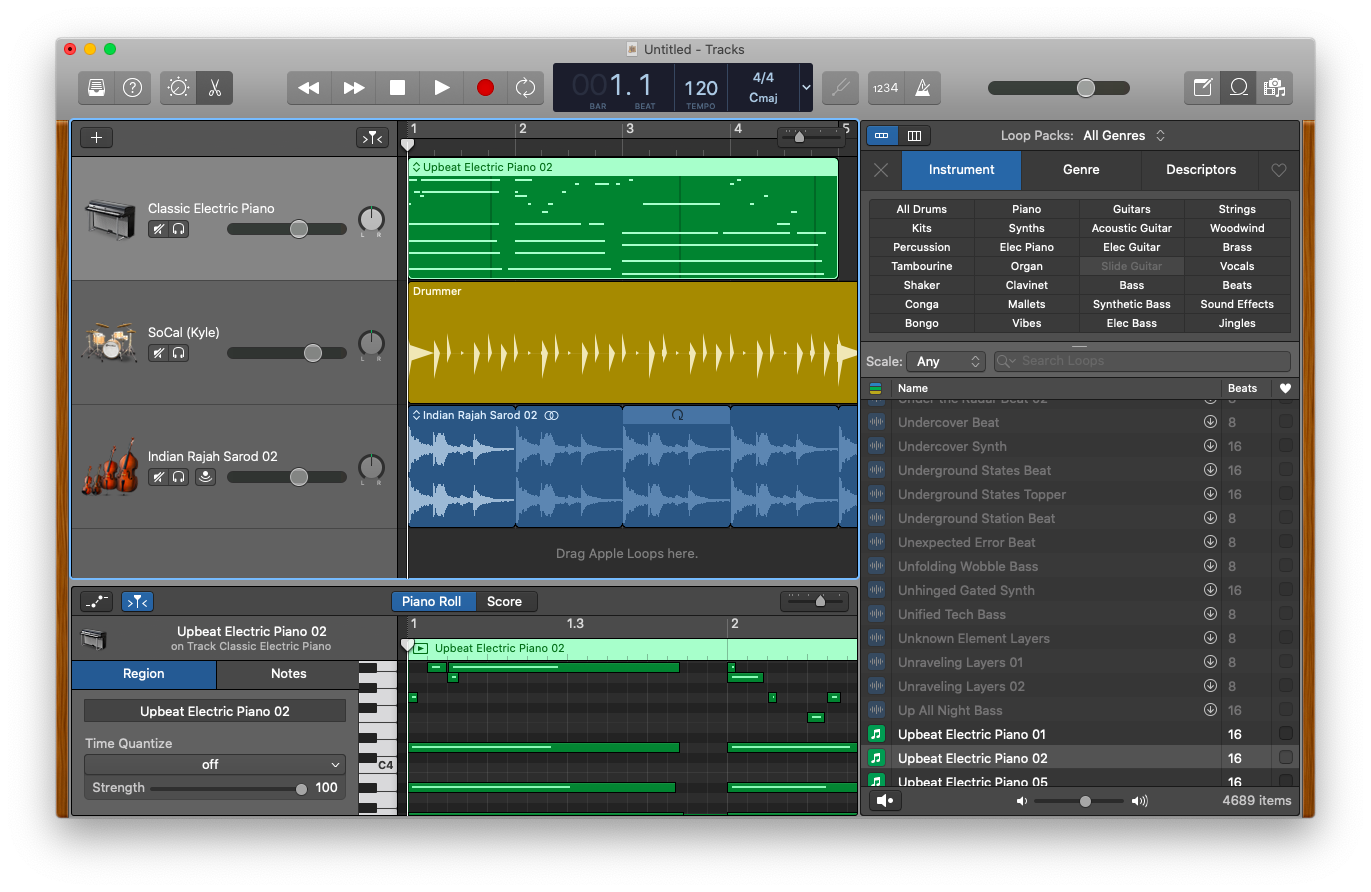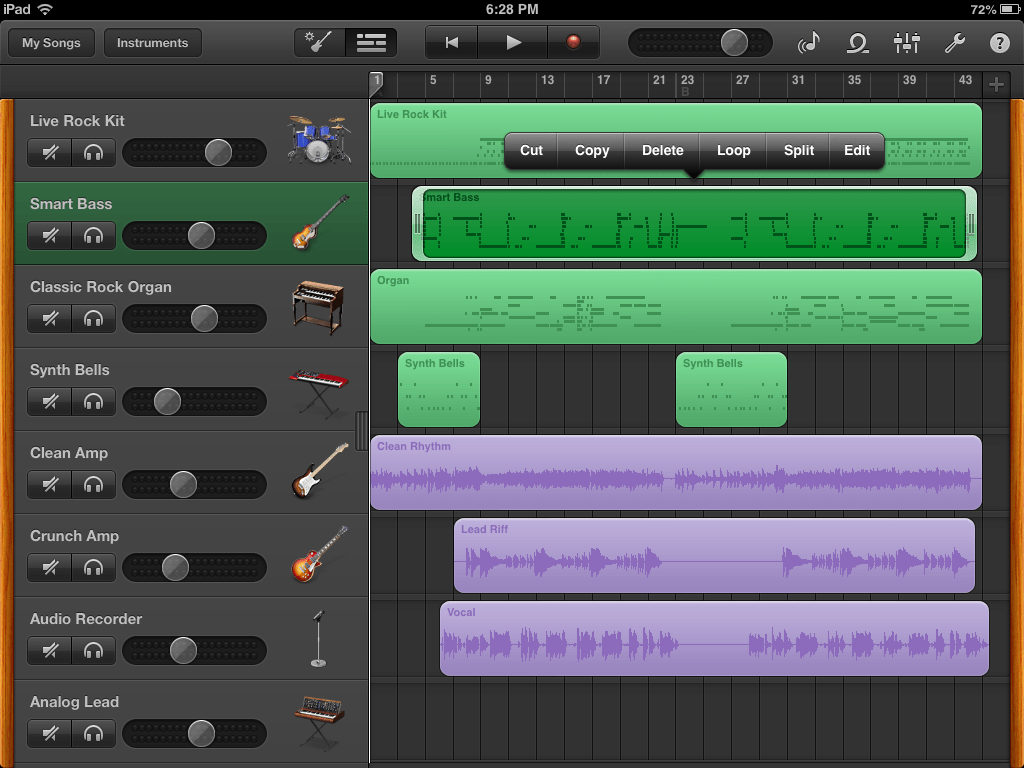


Combine two GarageBand projects in one song Or, try one of the Bass Amp presets.įigure 1: Click the Media Browser button to open (you guessed it) the Media Browser. Turn the bass up, the midrange down, and set treble and presence to taste. Boost the bass a bit to cut the midrange. Turn on the Compressor and move the slider to about 30.Play with the following effects settings until you like what you get: To make it even more realistic, double click the track header to open the Track Info pane.Your guitar should sound a lot like a bass. This transposes the guitar loop down one octave. Open the Track Editor and move the Region Pitch slider down to –12.Record your guitar playing the bass line an octave higher than you want it to sound when you’re finished.That’s all there is to it! Look in the loop library to find your loop alongside the others. Name the loop, select Loop or One Shot, and choose scale, genre, instrument, and mood descriptors.Make sure the desired loop is selected and choose Edit -> Add to Loop Library.To do this, position the playhead at the start of the desired bit and choose Edit -> Split (Command-T). Trim the track down to the portion you want to use as a loop.Starting with GarageBand 2.0, it’s a cinch to do this with your own recordings as well: The wonderful thing about GarageBand’s loops is that you can play them in any tempo and key that you want. You need to zoom the timeline way in to do it. It’s tricky to move a track by tiny increments in GarageBand, but it can be done. Duplicate the track and offset the new track ever so slightly.

Tip: Double-tracking isn’t the only method of thickening a track.

Garageband tips mac free#
Feel free to try adding reverb or other effects to the second track for variety. This will add thickness as well as a not so subtle stereo effect. There’s certainly nothing wrong with playing the second part differently and panning the two parts away from each other. The trick to double tracking is that the two versions have to be as identical as possible, at least if you want the effect to be invisible.


 0 kommentar(er)
0 kommentar(er)
